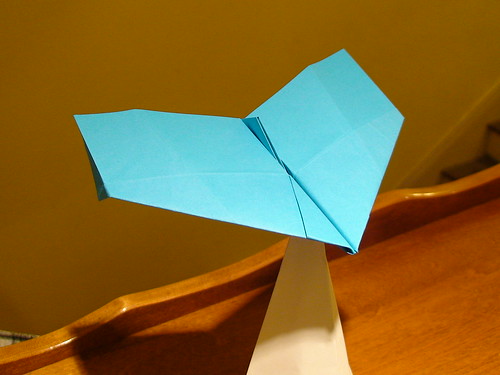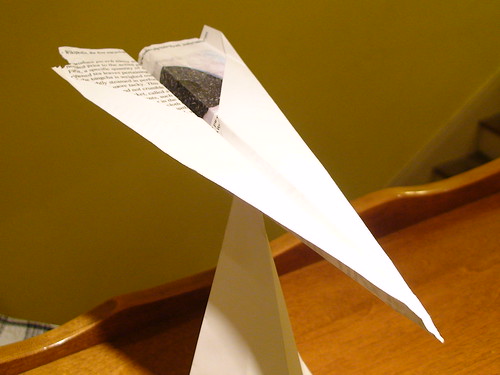One lazy Sunday, I decided to try out some tried and true paper airplane designs from The Dangerous Book For Boys. After observing certain flight characteristics because of the unique designs, I felt like experimenting with some designs of my own.
In the course of that first week, I probably folded about a hundred paper airplanes, and in the weeks after, several hundred more, as I made adjustments to certain designs, little by little, until I was able to derive the desired looks and flight characteristics. I managed three successful designs with an additional three prototypes that are works in progress. My favorite of the ones I created is pictured below.

As I learned more about paper airplanes and flight in general, I learned how to make better paper airplanes. I never had much luck with the classic dart, but since then I have made several satisfactory darts including one that sustained severe damage to the wing (general warping via dog slobber), stabilizer (dog bite), and nose (repeated crashes, mouth catches). Despite all the impediments, it still flies remarkably straight with an elegant flight pattern, which is a testament to both the design and build quality.

As I dabbled in paper airplane design, I developed my own philosophy. I subscribe to a version of the paper airplane philosophy known as aerogami. Aerogami is a branch of origami (Japanese for "folding paper") whose objective focuses on flying paper craft. My version is a subset which is more austere, as it disallows weights, cuts, or adhesives of any type, except for display purposes only. I build primarily gliders, striving for maximum wingspan, nice clean lines, and dramatic angles, so the plane will look as good on display as in flight. One of my favorite innovations is folding back the front part of the wing onto itself, creating a prominent airfoil. I also like to add a mid-wing crease that billows out the wings to create the pocket for the airfoil while also creating a profile similar to a hang glider. Currently I am studying the employment of canards and a possible forward swept wing design.
I find the act of folding paper airplanes therapeutic. My paper airplanes may not be the longest or furthest flying, but they do have a gentle, stable descent, and I believe their designs are unique and pleasant to look at. In life there are few simple joys as worthwhile as making a paper airplane and watching it catch the wind to stay aloft a few feet more.

No comments:
Post a Comment